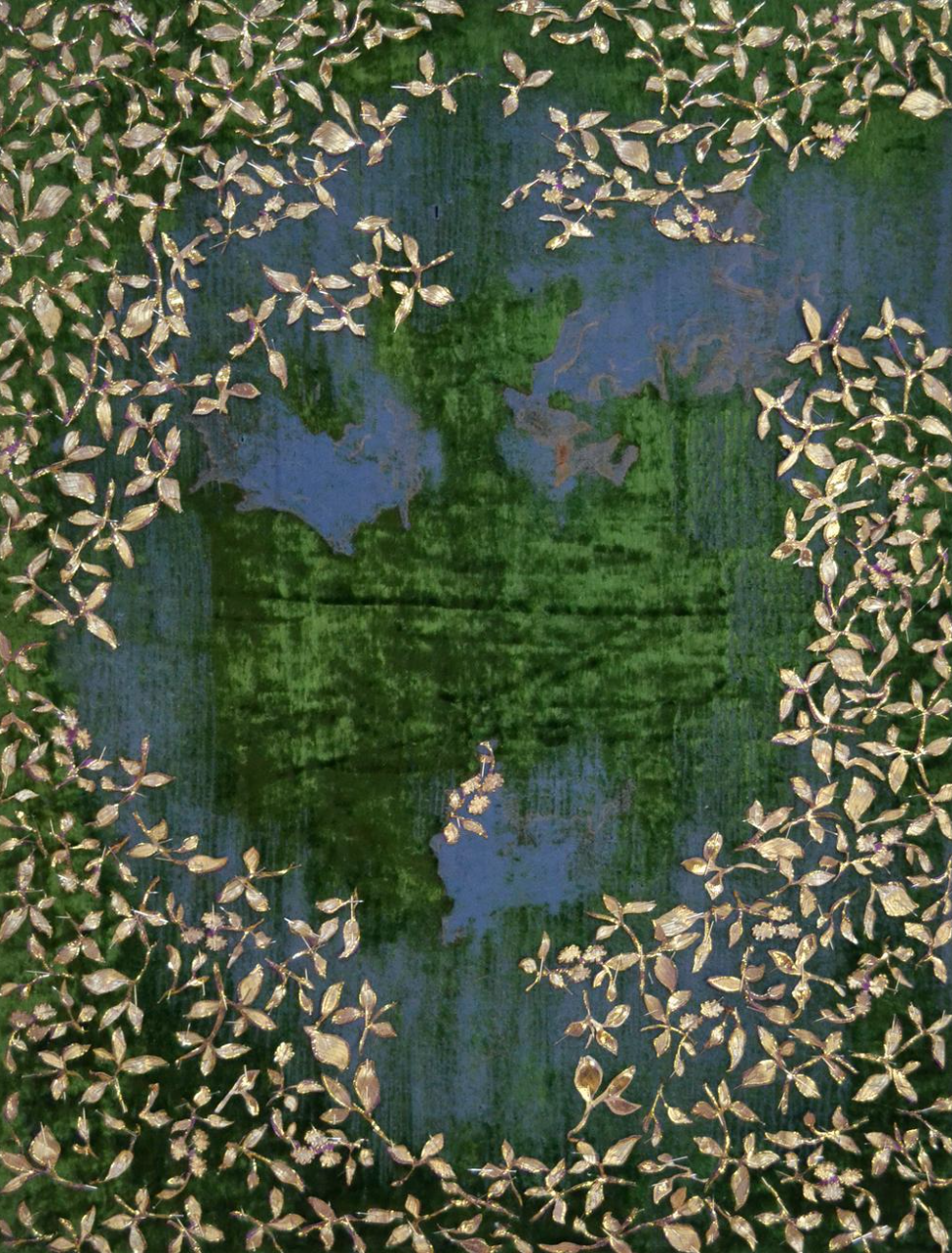False Hope or Moment of the Present
False Hope or Moment of the Present is a metaphor for the disjunction between the visible world or the presentable ideal and reality. This is a reflection of our society which interacts in invisible forms of communication. In this series, the bright patterns symbolize the “Dialogue”, producing positive and negative information and a discourse. After that, they transform through multiplications into an abstract form, the space of which is becoming as a self-evident, universal-natural behaviour, of endless iterance, which leads us into delusion.
The works are made up of very bright shining fabrics from Central Asia. These types of fabrics are often given as gifts at weddings and other celebrations in Kazakhstan. Yet they are often just passed from person to person, as even though they are bright, they are not particularly practical. Therefore, gifts, just like exchange of information in the modern world, often become superficial and illusionary.
The works’ compositions are composed by cuts of different fabrics, subsequently transforming them into a new shape. They are fixed to each other only with pins. Needles symbolize instability, inconstancy, collapse, and the shiny fabrics materially embody the notion of false hope. The fabrics attract with their brightness and brilliance, creating a special dazzling atmosphere in which it is difficult to pay attention to the fabric itself, that is, to "Reality" and to peer into each individual pattern, that is, to "Meaning."


























